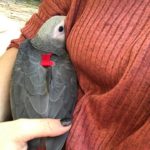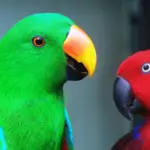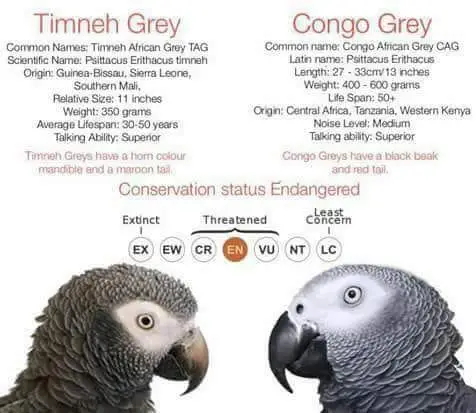
Both types of African Grey parrots can make excellent pets. With good socialization, an African Grey parrot from Congo or Timneh can be an affectionate pet for decades.

DIFFERENCE BETWEEN TIMNEH AND CONGO PARROTS – HOW TO DISTINGUISH THEM

Geography
The Congo and Timneh grey parrots both come from Africa but come from different parts of the continent. Congo African Grey has evolved in Central Africa, from Côte d’Ivoire to west Kenya, and to Tanzania and Angola to the south.
The geographical area of Timneh is much smaller, concentrated along with the coastal areas of West Africa, especially in Guinea, Ghana, and Côte d’Ivoire.
Size and color
Although many African grey parrots seem almost identical, there are differences between the Congo and Timneh parrots. Congo African Grey parrots are larger than Timneh.
Congos can measure up to 30 centimeters and weigh around 1 pound. The smaller Timneh parrot is generally only 25 centimeters and weighs 175 grams less than the Congo.
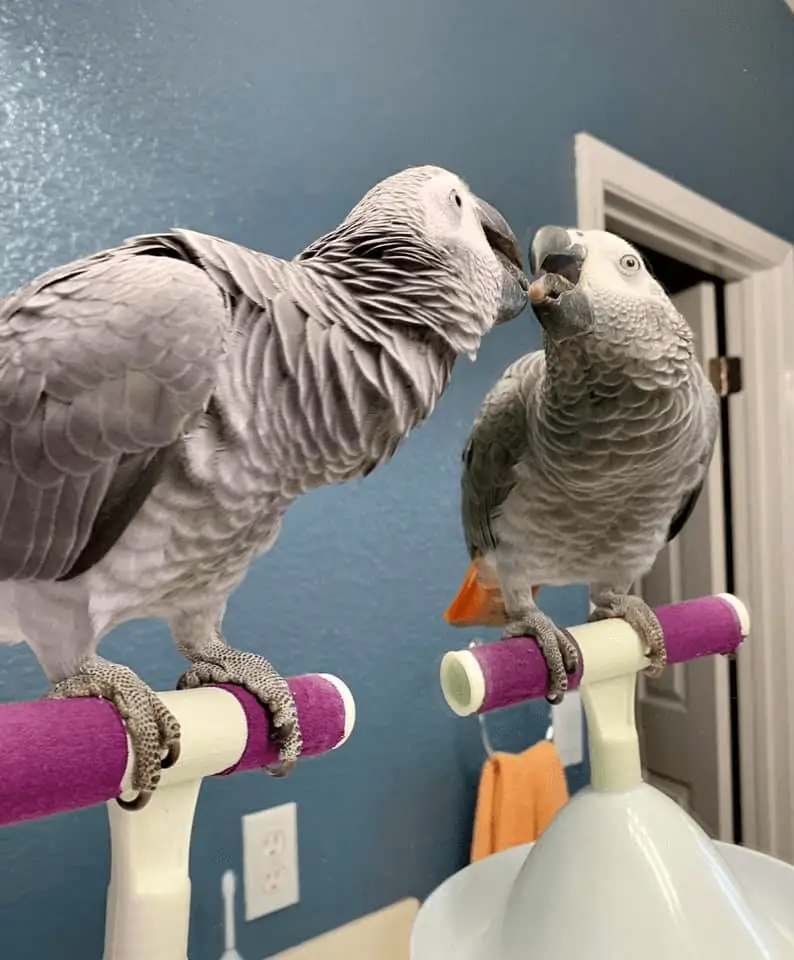
timneh african grey
The two parrots show slight differences in color. Timneh is dark gray and charcoal, while Congo can range from dark gray to light gray. The Timneh also has a pink upper beak and the Congo has a plain black beak.
The tail feathers of the African grey Congo are bright red. While the Timneh has dark brown tail feathers.
Personality
The two types of African grey parrots are intelligent and cautious birds. Dr. Irene Pepperberg of the University of Arizona estimated in 1995 that they have the intelligence of a 5-year-old child and the temperament of a 2-year-old child.
Congos and Timnehs bond with their caregivers, but Congos generally only love one person at a time. While the circle of Timnehs often extends to several members of the family.
Congo African Grey and Timneh are often considered to be calmer and more equal in mood than their older parents. These exotic birds mature faster, have fewer anxiety issues, and suffer less from the nervousness of the plumage.
The Greys of the Congo and the African Timneh can make fantastic pets with proper socialization and training. A Timneh may be a better choice for a beginner bird owner.
Ability to speak
The Timneh and Congo are generally big talkers. As the Timneh mature faster, they often start using simple words and phrases at the age of 6 months. Many Congos do not start speaking until they are one year old.
Most Congos imitate the voice of their interlocutor. Most Timneh, on the other hand, have their own voices. The latter was compared to a munchkin from the film “The Wizard of Oz” or a small child.
To stimulate your parrot as much as possible, we offer the widest choice of parrot toys available on the French-speaking market!
Congo Grey
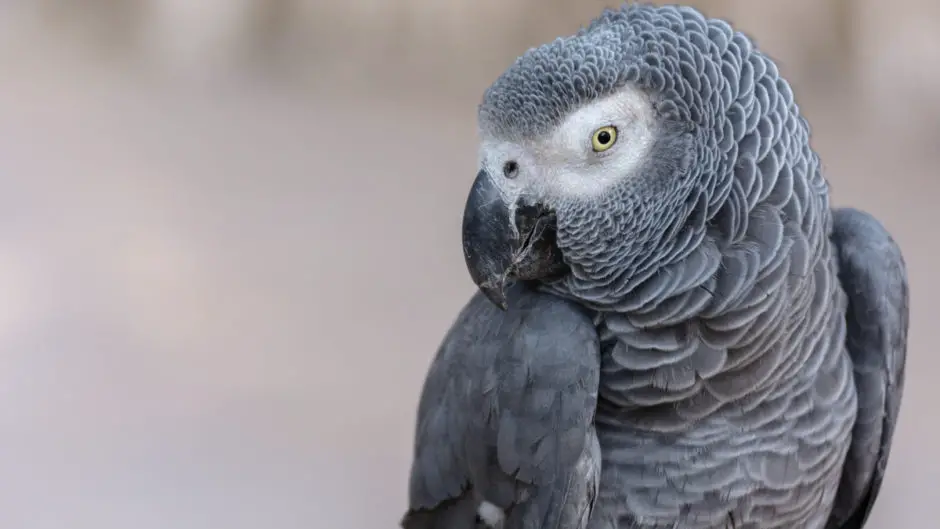
Timneh African Grey
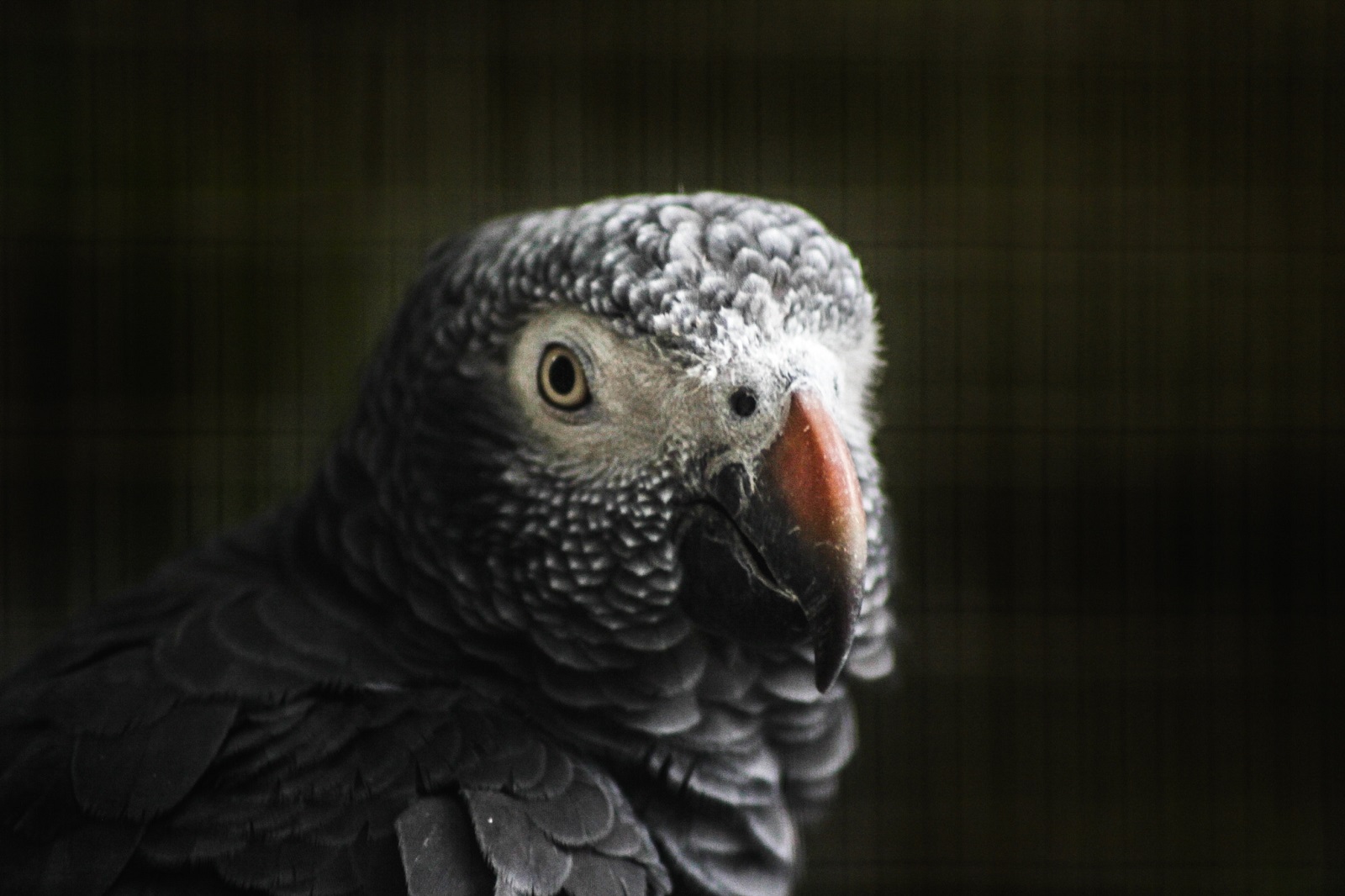
The Congo African Grey Parrot is the largest and most popular African Grey parrot species in Africa.
It differs from its cousin, the Timneh African Grey, by a larger size, lighter gray color, and a red tail rather than burgundy.
The Congo African Grey Parrot is a species highly prized for its intelligence, its ability to speak, and its sociability. It has been appreciated for thousands of years, because already the rich Greeks, then the Romans loved these birds so special that could reproduce the language of men.
Its popularity should not make us forget that Grey is a difficult bird, which requires a lot of care and attention and which will not suit everyone. The purpose of this article is to give you a bird’s eye view of this special bird to help you choose where you want to go, and avoid the main pitfalls you may encounter. Follow the guide.
Life expectancy
The Congo African Grey Parrot lives on average 50 years and can exceed 65 years, so be prepared in most cases to a commitment to life
Intelligence
African Grey parrot is an extremely intelligent bird. Moreover, the most famous African Grey parrot is Alex, studied for years by the ethologist Irene Pepperberg. Alex understood more than 1,000 words, and especially mastered a vocabulary of 100 words of English whose meaning he knew perfectly:
he understood such concepts as “bigger”, “smaller”, “same”, could count until ‘to six, and could distinguish seven colors and five shapes!
SOURCE:Champ AMC
Congo and Timneh Parrot speech
The Gabonese Greens are excellent for mimicry, and many (but not all) are excellent speakers, with a capacity of over 200 words.
Even those who do not repeat the words are very adept at repeating household noises like the phone or the door, often good enough to confuse their owners! Most African Grey Parrots master a large collection of sounds, which they like to repeat.
As studies have shown with Alex, the African Grey Parrots have a unique ability to place their words and sounds in the context of the moment, rather than simply repeating, which shows their intelligence.
Their intelligence makes the African Grey Parrot a very demanding pet, however. You must be prepared to spend a lot of time with African Grey, providing social contacts and mental stimulation.
The African Grey Parrots have been described as being emotional as a 2-year-old, and intellectually as a 5-year-old. This means that they need a lot of attention and patience, with a good deal of education to show them the right behaviors. And, they can be from time to time be a real challenge!
The Greens tend to be very cautious, even nervous and suspicious, in new situations and with new people. They are reputed to be entirely devoted to one person, but this is largely due to the fact that often only one person in a household spends enough time with an African Grey Parrot to weave a truly close bond.
Make an effort to socialize an African Grey Parrot with many people, and give your parrot the chance to get acquainted with any new person.
African Grey Parrot will be happy to communicate with more than one person if each person spends enough time to gain the trust and affection of the bird.
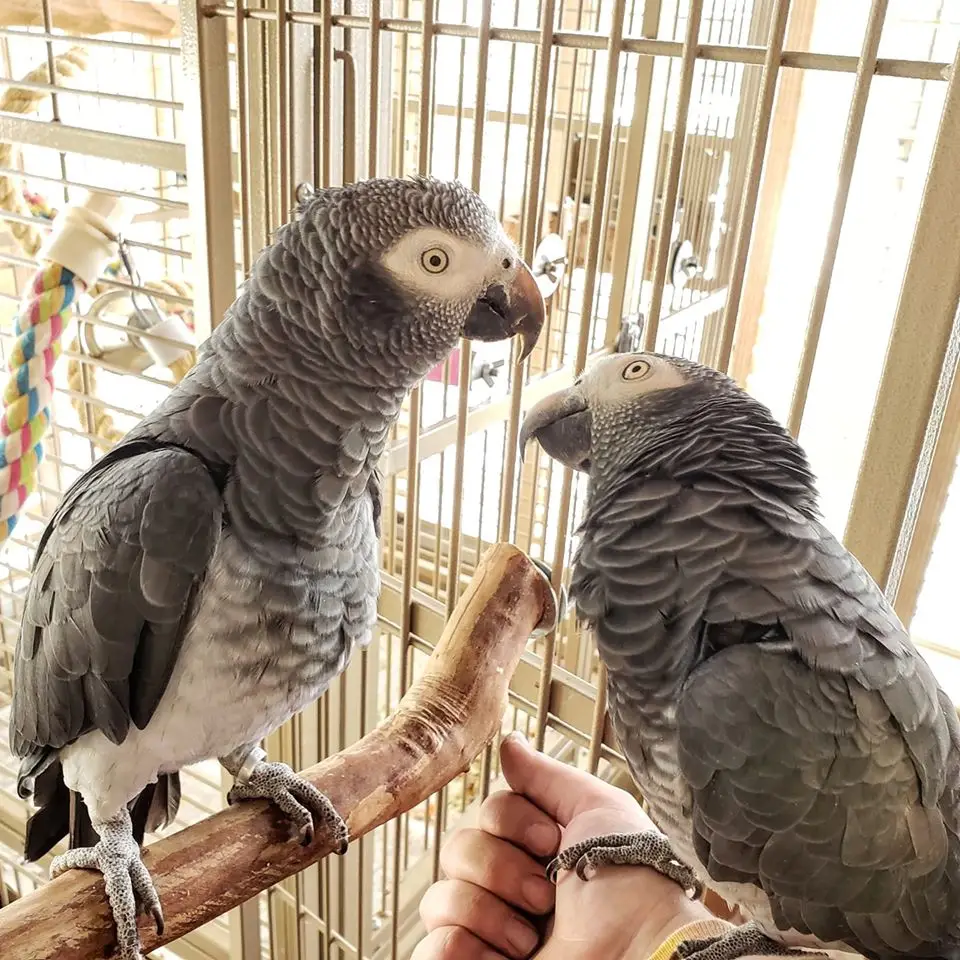
Congo and Timneh Parrot bites
African Grey Parrot has a bit of a reputation for biting, but this is largely due to socialization issues. Like other parrots, they bite, especially if they feel threatened in one way or another.
However, the confidence of an African Grey Parrot must be won with patience and respect and pushing the interaction with an African Grey Parrot who does not fully trust you can be worth a bite.
They also have an excellent perception of the mood of people around them, and so they must be approached with a calm and relaxed attitude, or the bird might become restless or excited.
In addition, a parrot who is bored or stressed is more likely to have behavioral problems – which include biting – so be sure that the bird’s emotional, mental and physical needs are met: avoid problems.
The intelligence of these birds means that they must have a lot of social interactions with their owners and mental and physical stimulation.
Picking up feathers
The Greens have a reputation for feather pullers. Parrots in general, including The African Grey Parrot, sometimes resort to feather pulling or to worst forms of self-mutilation, for various physical and physiological reasons, and also if their emotional needs are not met they are stressed.
It should be noted that any bird that pulls its feathers needs a thorough check from a veterinarian to rule out a possible physical cause. If none can be found, then the behavioral reasons should be explored.
The possible tendency of The African Grey Parrottowards this attitude comes probably from their intelligence and their need for attention and stimulation.
In summary, the African Grey Parrot is a beautiful and amazing parrot but is not the right bird for everyone.
Potential homeowners must carefully evaluate their ability to commit to meeting the needs of these birds throughout their life expectancy and to be sure they understand the best way to care for these beautiful parrots.
Lodge your African Grey Parrot
Size of the cage: the bigger it is, the better. You will need a large cage for these birds. I recommend a minimum in the area of 90 cm by 60 cm by 120 cm in height, but a larger size is definitely better when it comes to housing parrots.
The spacing of the mesh should be 1.9 to 2.5 cm.
At least part of the cage should have horizontal bars to allow the bird to climb to the sides of the cage.
The cage should be placed in a part of the house where the bird will have a lot of contact with people, but ideally not the most frantic of the house.
Keep the cage away from the windows, where the African Grey Parrot would receive direct sunlight (which could overheat them), protected from drafts, and not too close to radiators or air conditioning ducts.
A selection of perches should be provided – varied in size and material (for example, natural branches such as manzanita wood, which is often available at pet stores). Soft and slippery perches should not be used, nor perches covered with sandpaper.
Get a good selection of toys – the right size and after having checked for safety (see especially the parts that could be swallowed, the risk of strangulation or trap).
Having a good selection of toys and spinning them in the cage can help you provide entertainment and stimulation to your bird.
Plan to let your African Grey Parrot spend a lot of time outside his cage, every day.
Feed The African Grey
Variety is the key here. Meatball diets should form the basis of the diet, but they should be supplemented with a variety of fresh fruits and vegetables as well as seeds and proteins.
A small amount of seed mix can also be used to feed it, bearing in mind that while seeds have some nutritional value and place in the diet, they are still largely greasy and unbalanced and should not be the main part of the diet.
African Grey Parrot is somewhat prone to calcium deficiency, so their calcium levels should be checked annually by a veterinarian.
Calcium supplements should not be used except on the advice of a veterinarian, but it may be beneficial to feed it with a wide variety of calcium-rich foods such as green leafy vegetables (green cabbage, mustard, spinach …).
Fresh drinking water must be available at all times. Food and water dishes should be washed daily.

